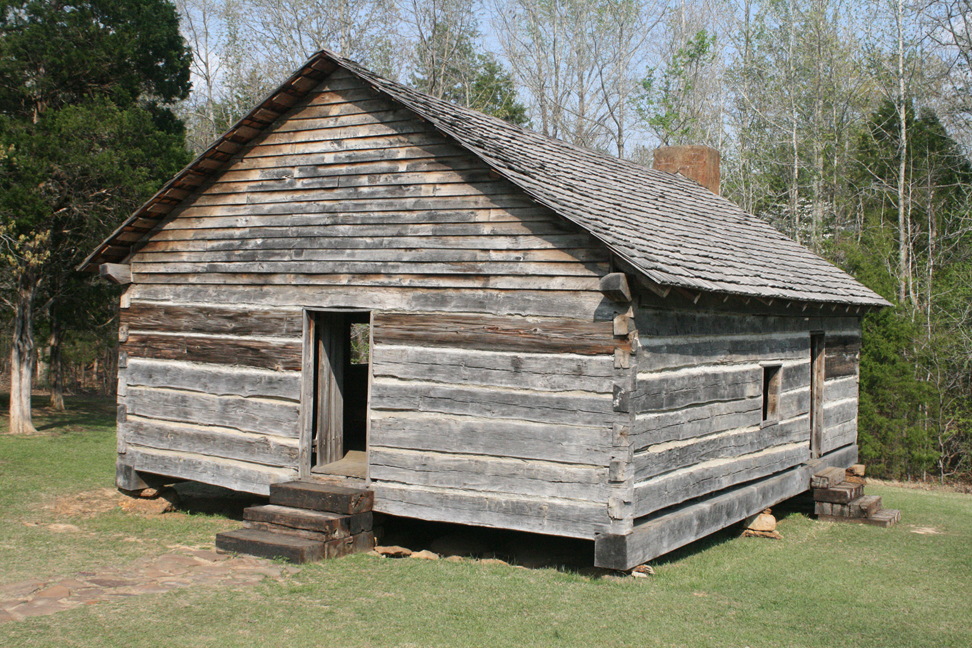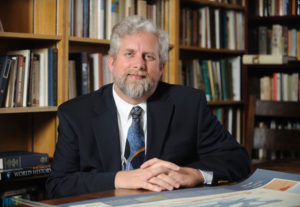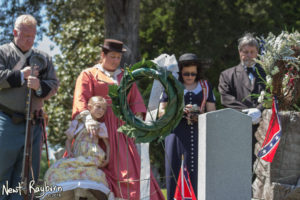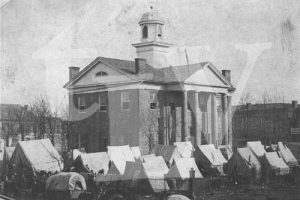
Shiloh is 114 miles from Oxford, Mississippi, about an hour and a half’s drive.
photographs and article by Newt Rayburn

Oxford, Miss. (TLV) – One hundred and sixty years ago one of the most ferocious battles in the history of the United States occurred just over the Mississippi–Tennessee border, near a little church known as Shiloh.
Approximately 45,000 Confederate soldiers led by General Albert Sidney Johnston marched from Corinth, Mississippi, to the Tennessee River and surprised Union General Ulysses S. Grant’s 49,000 troops at Pittsburg Landing.

Johnston’s Army of Mississippi nearly defeated Grant’s Army of The Tennessee on Sunday, April 6, 1862 with a surprise attack at dawn.
The Confederates overran Union encampments commanded by Brigadier Generals Sherman, Wallace, Prentiss, and Major General Lew Wallace pushing them back towards the Tennessee River in a matter of hours.
Some of the Union army under the command of Wallace and Prentiss were surrounded in an area called “The Hornet’s Nest” but they held the Confederates at bay for several hours.
Fifty cannons and waves of musketry later, Prentiss and approximately 2,400 federal troops eventually surrendered, but Union General W.H.L. Wallace suffered a mortal wound and died on the battlefield.
Confederates suffered nearly 8,500 casualties that day, including General Albert Sidney Johnston, who was mortally wounded near “The Peach Orchard.”
Confederate President Jefferson Davis considered Johnston his most effective general, even more so than Robert E. Lee. The South had lost its greatest commander.


General P.G.T. Beauregard took command of the Army of Mississippi after Johnston passed at 2:30 pm, but he was unable to push the Union army away from the Tennessee River before the sun set on April 6.
In the darkness, both armies hunkered down in their positions as a thunderstorm passed through the area. The night was filled with rain, cries of the wounded between the armies, and the systematic shelling of Confederate positions by Union gunboats on the river.
Everyone was terrified that night.
A famous Civil War anecdote occurred this evening when Sherman met Grant under a tree.
U.S. Grant was smoking a cigar and contemplating the situation.
Sherman said, “Well, we’ve had the devil’s own day, haven’t we?”
Grant puffs his cigar and looked up. “Yes. Lick ‘em tomorrow, though.”
Beauregard prematurely thought he would defeat Grant the next morning and even dismissed reports by Colonel Nathan Bedford Forrest that Grant’s army was being reinforced.
In fact, Grant’s army grew that night by over 15,000 fresh troops supplied by General Don Carlos Buell who had marched his troops from Nashville.
At dawn on April 7, 1862, Grant and Buell launched a counter offensive against Beauregard’s troops and fought the Confederates back throughout the day.
General Sherman described some of the fighting that day as “the severest musketry fire I ever heard.”
The battle of 100,000 soldiers fighting in an area smaller than Oxford was intense. Many of the wounded and dying soldiers gathered around a small pond which ran thick with blood. The surviving Confederates started their retreat back to Corinth and the Union army did not pursue.


On April 8, 1862 Sherman’s troops marched to an area southwest of Shiloh.
They came across a Confederate Hospital that was protected by 200 yards of cut timber, and 300 riders of Nathan Bedford Forrest’s Cavalry.
Forrest ordered a charge against Sherman’s men and in the melee, Confederate troopers overran Union troops, nearly capturing Sherman.
Forrest charged right into the Union soldiers without regard and unloaded his guns and slashed with his sabre.
Sherman’s men yelled out, “Kill him and his horse!”
As legend has it, Forrest grabbed a Union soldier and used the man as a shield to cover his back during his dash to escape.
Forrest suffered a serious wound to the hip, but later recovered, and the Battle of Fallen Timbers propelled him to legend among Confederate troops.
Colonel Forrest was quickly promoted.

After the war, Union General William T. Sherman remarked, “I am sure that had he (Forrest) not emptied his pistols as he passed through the skirmish line, my career would have ended right there.”
Forrest’s charge paid off. Sherman and his troops fled back to Pittsburg Landing, and the Confederates escaped to Corinth.
The Battle of Shiloh is one the bloodiest in American history. Union casualties numbered over 13,000 and the Confederates suffered nearly 11,000. Citizens in the North and South were shocked at the carnage and any notion of a short war was dismissed.

Many of Shiloh’s casualties were moved by train from Corinth to Oxford, Mississippi, and some buildings at the University of Mississippi were used as hospitals and morgues.
Farley Hall was once the location of the “Dead House” and was used as a mortuary for dead soldiers. Many of those soldiers are buried in the Confederate Cemetery right behind Tad Smith Coliseum on the Ole Miss campus.
Today we can only imagine the horror that must have gripped Oxford as trains of casualties were shipped into town following the Battle of Shiloh. In the months afterwards, towns around Northeast Mississippi fell to Union forces.
Oxford was inevitably in General Grant’s sights.
But that is a story for another day…
See more of Newt Rayburn’s photographs from Shiloh National Military Park here.
Read more of The Local Voice’s coverage of the 150th Anniversary of the Battle of Shiloh here:
“Rediscover the Battle of Shiloh”
by Newt Rayburn
Including exclusive photographs from important areas of the battlefield.
“Why I Reenact” by Brian Walker
Including exclusive photographs of the Sesquicentennial Reenactment of the Battle of Shiloh.
“Shiloh’s Grand Illumination, April 7, 2012”
by Newt Rayburn
Including exclusive photographs of the 23,746 luminarias placed at the site of the Battle of Shiloh, 150 years later.



